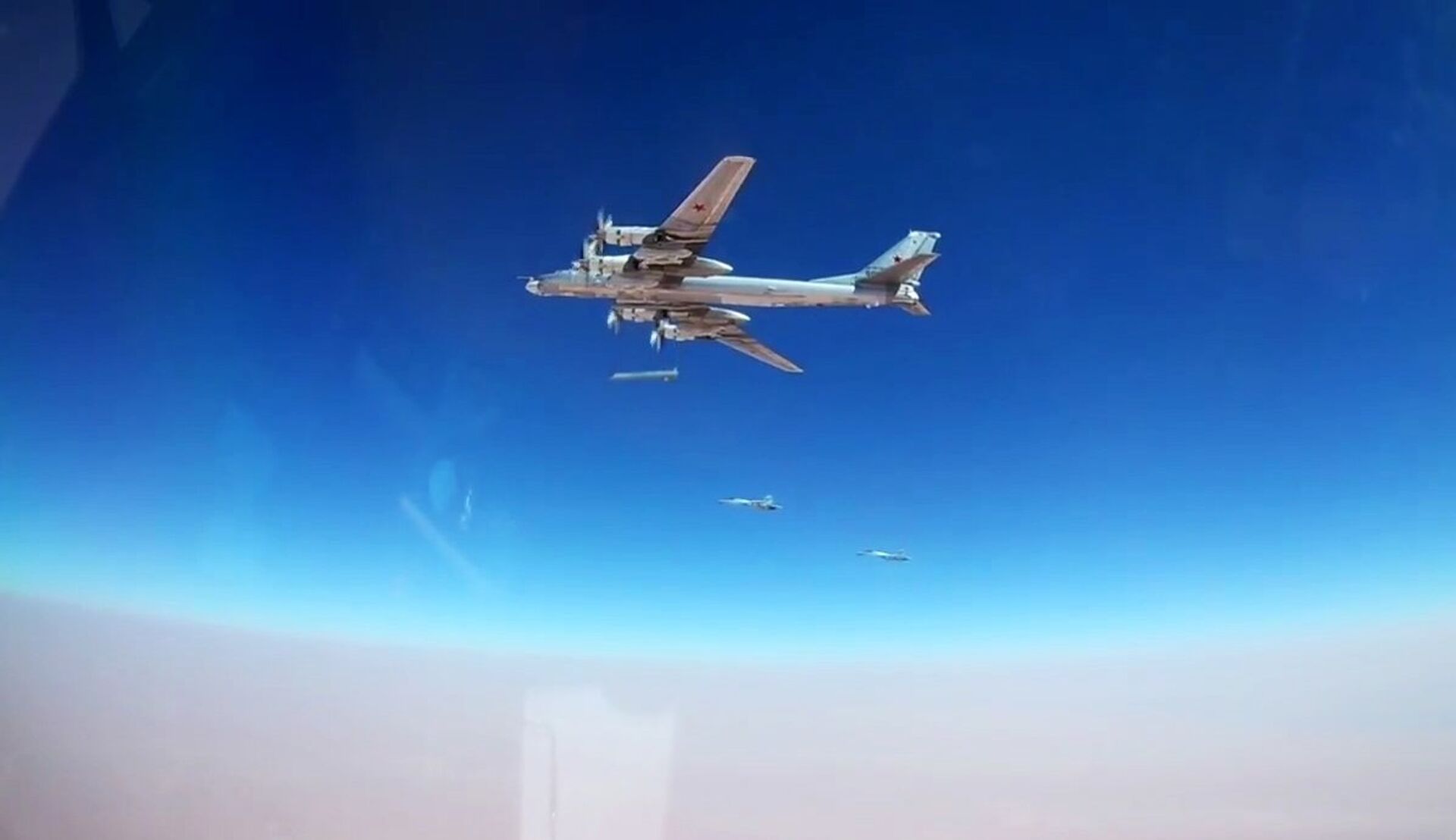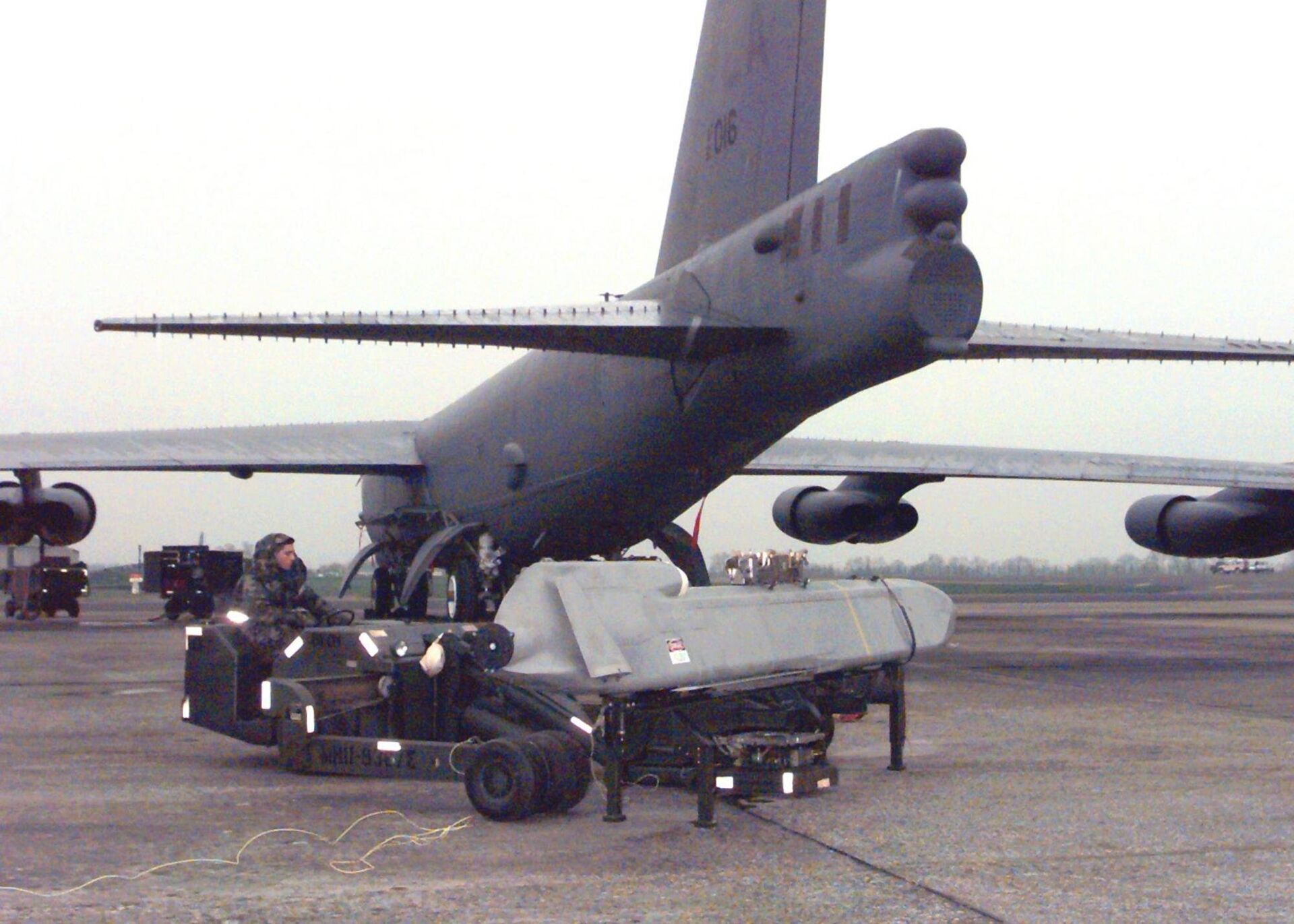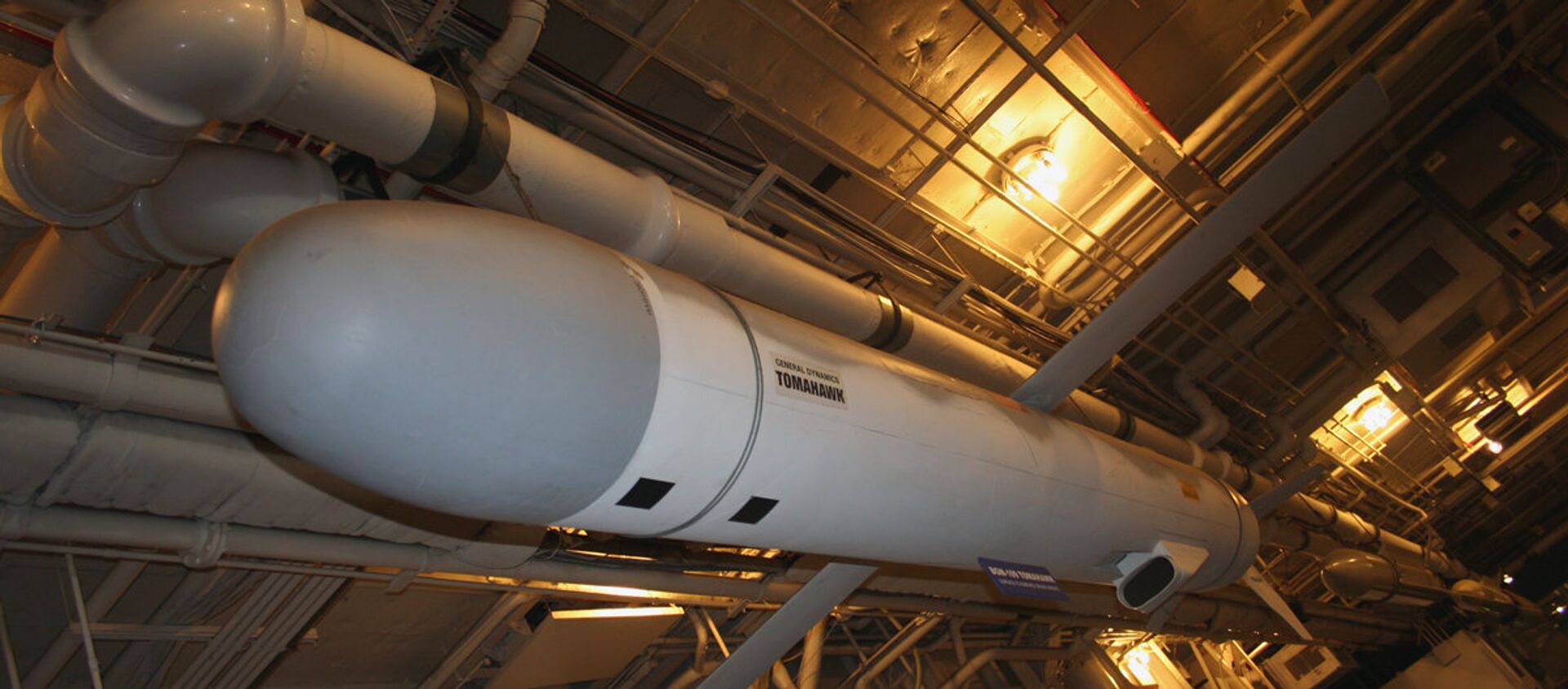https://sputnikglobe.com/20230927/what-are-kalibr-and-kh-101-cruise-missiles-and-whats-made-them-so-effective-in-ukraine-1113741543.html
What are Kalibr and Kh-101 Cruise Missiles and What's Made Them Effective in Ukraine?
What are Kalibr and Kh-101 Cruise Missiles and What's Made Them Effective in Ukraine?
Sputnik International
NATO countries continue to climb up the escalation ladder with Russia, suppling Kiev with ever deadlier and more advanced weapons. Kiev reportedly now wants Western analogues of Russia’s best cruise missiles, the Kalibr and Kh-101. What are the missiles’ characteristics? Why does Ukraine’s military want them? Sputnik explains.
2023-09-27T17:30+0000
2023-09-27T17:30+0000
2023-09-27T18:59+0000
military
russia
ukraine
vladimir putin
nato
almaz-antey
kalibr
tomahawk
kh-101
missile
https://cdn1.img.sputnikglobe.com/img/106450/73/1064507312_0:160:3073:1888_1920x0_80_0_0_ee31e1d6c5812c0330a1b9934344a08e.jpg
The nearly $100 billion in military assistance Western countries have now provided to Ukraine, including billions for short, medium and long-range artillery, multiple launch rocket systems (MLRS), and cruise missiles, hasn’t quenched the Ukrainian military’s ambitions, with Kiev seeking NATO equivalents of Russia’s ultra-long range cruise missiles.The official highlighted the Russian weapons’ speed, maneuverability and stealth characteristics, saying they make the weapons difficult to intercept, and stressed that Kiev remains willing to use its Western-provided long-range strike weapons “as soon as we have a target and we can hit it.”What is the Kalibr Cruise Missile?The Kalibr (lit. ‘Caliber’) is the name given on an entire family of Russian anti-ship, anti-submarine, land attack, submarine, ship and (in the future) ground-launched cruise missiles, with an operational range between 220 and 4,500 km, and a payload of between 400-500 kilograms of high explosives, or a nuclear weapon.The Kalibr’s development began in the 1980s, when the Soviet military tasked Sverdlovsk-based Novator Design Bureau (now part of Almaz-Antey) with the creation of a new, non-nuclear version of the KS-122 strategic cruise missile; development work on the new missile, featuring supersonic boost capability in the final stage of flight, was completed in 1990. The Kalibr made its first public appearance at a military expo in 1993, but its delivery into the Russian military was slowed by to the collapse of the USSR and deep cuts in military spending.Russia began producing the Kalibr in the mid-1990s, with engineers developing over a dozen domestic and export variants through past two-and-a-half decades. The Kalibr’s first operational deployment occurred in 2015, when missiles were used to target terrorist militias in Syria, launching from small Russian Navy corvettes in the Caspian Sea, as well as heavy frigate warships and submarines in the Mediterranean.After the escalation of the Donbass crisis into a full-blown NATO proxy war in Ukraine in early 2022, Russia began firing dozens of Kalibrs at military targets across Ukraine, with the missiles targeting command points, air bases, and air defense systems. Last fall, Kalibrs were used to target Ukraine’s energy infrastructure in response to repeated attacks by Kiev on Russian civilian infrastructure, including the Crimean Bridge.What is the NATO Equivalent of the Kalibr?The closest mass-produced NATO analogue to the Kalibr is the Tomahawk – the universal American long-range, all-weather subsonic cruise missile. Introduced in the 1980s and featuring an array of variants, the missile can be armed with either a 450 kg conventional payload, or a W80 low-to-intermediate yield nuclear warhead, and has an operational range of between 460 and 2,500 km, depending on the modification.While Russia as exported variants of the Kalibr to at least four countries (Algeria, China, India and Vietnam) Washington has strictly limited the Tomahawk’s availability to allies, so far only exporting it to the UK.The Tomahawk has several known disadvantages against the Kalibr, including its steady subsonic flight speed, which makes it more vulnerable to enemy air defenses, inferior precision and range characteristics, and shoddy performance record (as demonstrated in Iraq in 2003, when up to 30 Tomahawks were shot down by Iraqi air defenses, and in Syria in 2017 and 2018, where well over half of the US, British and French missiles launched failed to reach their targets).Russian military historian Yuri Knutov, director of the Museum of Air Defenses in Moscow region, says the Kalibr’s speed characteristics, and especially its ability to alter its speed during flight, makes it stand out when compared against NATO analogues.Kalibrs are also equipped with modern algorithms designed specifically to compensate for and evade modern air defenses, with these capabilities providing the missiles with “quite a serious advantage,” according to the expert.What is the Kh-101 Missile, and Does It Have a NATO Analogue?The Kh-101 (known as the Kh-102 in its thermonuclear payload variant) is a strategic, ultra-long-range cruise missile introduced into service with the Russian military in 2013, and developed by the legendary Raduga Design Bureau (known for development work on Russia’s first hypersonic weapons) going back to the 1970s and 1980s. Capable of flying up to 5,500 km, and featuring a 400 kg warhead in its conventional variant, and a 250 kiloton-to-one megaton warhead in nuclear mode, the Kh-101/102 is launched from Russia’s strategic bomber fleet, including the workhorse Tupolev Tu-95, the Tupolev Tu-160 White Swan, and the Sukhoi Su-34 supersonic medium-range fighter-bomber.The Russian missile’s range characteristics are far superior to any cruise missile fielded anywhere in the world, with only the now retired American AGM-129 Advanced Cruise Missile (ACM) coming anywhere close, with its range of up to 3,700 km. Carried exclusively by B-52H Stratofortress bombers, the missiles, introduced in 1990, were removed from service and decommissioned by the US Air Force in 2012 due to reliability issues and high maintenance costs.Like the Kalibr, the Kh-101 was first deployed over Syria between 2015-2017, targeting terrorist strongholds, camps and command centers. Since 2022, the missiles have occasionally been deployed to attack strategic targets behind the frontlines in Ukraine.The Kh-101 is equipped with radar signature reduction technologies, an inertial guidance system fitted with optical-electronic correction, and a homing head that’s used for the final stage of flight to reduce the effectiveness of jamming. The Kh-101’s trajectory can be corrected mid-flight.With the AGM-129 ACM retired, the closest thing to the Kh-101 NATO’s got is the US AGM-86 Air-Launched Cruise Missile (ALCM), introduced in the early 1980s and featuring an operational range of over 2,400 km. However, unlike the Kh-101, the only variant of the ALCM now in service (the AGM-86B) is available only in a nuclear option, and is launched from B-52H, which eliminates the opportunity for it to be used in conventional strikes, much less being handed over to Washington’s clients in Kiev.US aerospace giant RTX is working on a successor to ALCM, the AGM-181 Long Range Stand Off Weapon (LRSO), but the missile, which is expected to have a 2,500 km range, is also set to be able to fire only nuclear munitions.That means when it comes to comparing the Kh-101 against a NATO system, it comes back to Tomahawk (the limitations of which have been outlined above). China’s CJ-20 cruise missile (with a range up to 2,000 km), North Korea’s Hasal-2 (2,000 km), Iran’s Paveh (1,650 km), India’s Nirbhay (1,500 km), France’s Missile de Croisiere Naval (1,400 km) have all either surpassed or approached the very best Tomahawks available in terms of range characteristics.The truly “global reach” of Russian cruise missiles like the Kalibr and the Kh-101 has prompted Russian officials to stress that these capabilities have all but eliminated Russia’s need to mimic the US and NATO’s strategy of dotting the globe with military bases. “Why should we need a [permanent] base,” President Putin asked in 2015, commenting on Russian operations in Syria. “Should we need to reach somebody, we can do so without a base,” he said.
https://sputnikglobe.com/20180531/us-equipment-trophies-in-russian-hands-1064989224.html
russia
ukraine
Sputnik International
feedback@sputniknews.com
+74956456601
MIA „Rossiya Segodnya“
2023
News
en_EN
Sputnik International
feedback@sputniknews.com
+74956456601
MIA „Rossiya Segodnya“
Kalibr missiles explainer
Sputnik International
Kalibr missiles explainer
2023-09-27T17:30+0000
true
PT0M40S
Sputnik International
feedback@sputniknews.com
+74956456601
MIA „Rossiya Segodnya“
what is the kalibr, what is the tomahawk, what is the kh-101, missile, cruise missile, rocket, range, speed, capabilities, characteristics, russia, united states, nato, ukraine
what is the kalibr, what is the tomahawk, what is the kh-101, missile, cruise missile, rocket, range, speed, capabilities, characteristics, russia, united states, nato, ukraine
What are Kalibr and Kh-101 Cruise Missiles and What's Made Them Effective in Ukraine?
17:30 GMT 27.09.2023 (Updated: 18:59 GMT 27.09.2023) NATO countries continue to climb up the escalation ladder with Russia, suppling Kiev with ever deadlier and more advanced weapons. Kiev reportedly now wants Western analogues of Russia’s best cruise missiles, the Kalibr and Kh-101. What are the missiles’ characteristics? Why does Ukraine’s military want them? Sputnik explains.
The
nearly $100 billion in military assistance Western countries have now provided to Ukraine, including billions for short, medium and long-range artillery, multiple launch rocket systems (MLRS), and cruise missiles, hasn’t quenched the Ukrainian military’s ambitions, with Kiev seeking NATO equivalents of Russia’s ultra-long range cruise missiles.
“We want an analogue of the Russian Kalibr and Kh-101s,” a source in Ukraine’s General Staff told British business media this week.
The official highlighted the Russian weapons’ speed, maneuverability and stealth characteristics, saying they make the weapons difficult to intercept, and stressed that Kiev remains willing to use its Western-provided long-range strike weapons “as soon as we have a target and we can hit it.”
What is the Kalibr Cruise Missile?
The Kalibr (lit. ‘Caliber’) is the name given on an entire family of Russian anti-ship, anti-submarine, land attack, submarine, ship and (in the future) ground-launched cruise missiles, with an operational range between 220 and 4,500 km, and a payload of between 400-500 kilograms of high explosives, or a nuclear weapon.
The Kalibr’s development began in the 1980s, when the Soviet military tasked Sverdlovsk-based Novator Design Bureau (now part of Almaz-Antey) with the creation of a new, non-nuclear version of the KS-122 strategic cruise missile; development work on the new missile, featuring supersonic boost capability in the final stage of flight, was completed in 1990. The Kalibr made its first public appearance at a military expo in 1993, but its delivery into the Russian military was slowed by to the collapse of the USSR and deep cuts in military spending.
The missile’s major advantage turned out to be its modular design, and capability to be adopted for use against a variety of different types of targets, and launched by various sea and air-based platforms. This, combined with its impressive range and speed characteristics, allowed it to survive the post-Soviet transition period intact.
Russia began producing the Kalibr in the mid-1990s, with engineers developing over a dozen domestic and export variants through past two-and-a-half decades. The Kalibr’s first operational deployment occurred in 2015, when missiles were used to target terrorist militias in Syria, launching from small Russian Navy corvettes in the Caspian Sea, as well as heavy frigate warships and submarines in the Mediterranean.
After the escalation of the Donbass crisis into a full-blown NATO proxy war in Ukraine in early 2022, Russia began firing dozens of Kalibrs at military targets across Ukraine, with the missiles targeting command points, air bases, and air defense systems. Last fall, Kalibrs were used to target Ukraine’s energy infrastructure in response to repeated attacks by Kiev on Russian civilian infrastructure, including the Crimean Bridge.
Russian military observers have praised Kalibr as among “the most effective” long-range missile used in the Ukrainian crisis to date, with their autonomous inertial guidance system, resistance to jamming, ability to hug close to the ground during flight, and to accelerate in the final stage using a unique maneuver, dramatically increasing the missiles’ ability to penetrate enemy air and missile defenses and hit their targets.
What is the NATO Equivalent of the Kalibr?
The closest mass-produced NATO analogue to the Kalibr is the Tomahawk – the universal American long-range, all-weather subsonic cruise missile. Introduced in the 1980s and featuring an array of variants, the missile can be armed with either a 450 kg conventional payload, or a W80 low-to-intermediate yield nuclear warhead, and has an operational range of between 460 and 2,500 km, depending on the modification.
While Russia as exported variants of the Kalibr to at least four countries (Algeria, China, India and Vietnam) Washington has strictly limited the Tomahawk’s availability to allies, so far only exporting it to the UK.
The Tomahawk has
several known disadvantages against the Kalibr, including its steady subsonic flight speed, which makes it more vulnerable to enemy air defenses, inferior precision and range characteristics, and shoddy performance record (as demonstrated in Iraq in 2003, when up to 30 Tomahawks were shot down by Iraqi air defenses, and in Syria in 2017 and 2018, where well over half of the US, British and French missiles launched
failed to reach their targets).
Russian military historian Yuri Knutov, director of the Museum of Air Defenses in Moscow region, says the Kalibr’s speed characteristics, and especially its ability to alter its speed during flight, makes it stand out when compared against NATO analogues.
“The Tomahawks have a more or less stable flight speed, while if we’re talking about the Kalibr, they can modify flight speed across a fairly broad range,” Knutov told Sputnik, adding that the Kalibr’s unique bell curve-style maneuver during the final stage of flight can make the missile “practically impervious to enemy air defenses.”
Kalibrs are also equipped with modern algorithms designed specifically to compensate for and evade modern air defenses, with these capabilities providing the missiles with “quite a serious advantage,” according to the expert.
“These missiles are not very vulnerable to Ukraine’s air and missile defense systems. That’s the most important thing,” Knutov stressed, pointing out that the Kalibr is “constantly undergoing modifications,” with a new variant with a one-ton warhead and improved accuracy and speed characteristics in the works.
What is the Kh-101 Missile, and Does It Have a NATO Analogue?
The Kh-101 (known as the Kh-102 in its thermonuclear payload variant) is a strategic, ultra-long-range cruise missile introduced into service with the Russian military in 2013, and developed by the legendary Raduga Design Bureau (known for development work
on Russia’s first hypersonic weapons) going back to the 1970s and 1980s. Capable of flying up to 5,500 km, and featuring a 400 kg warhead in its conventional variant, and a 250 kiloton-to-one megaton warhead in nuclear mode, the Kh-101/102 is launched from Russia’s strategic bomber fleet, including the workhorse Tupolev Tu-95, the Tupolev Tu-160 White Swan, and the Sukhoi Su-34 supersonic medium-range fighter-bomber.
The Russian missile’s range characteristics are far superior to any cruise missile fielded anywhere in the world, with only the now retired American AGM-129 Advanced Cruise Missile (ACM) coming anywhere close, with its range of up to 3,700 km. Carried exclusively by B-52H Stratofortress bombers, the missiles, introduced in 1990, were removed from service and decommissioned by the US Air Force in 2012 due to reliability issues and high maintenance costs.
Like the Kalibr, the Kh-101 was first deployed over Syria between 2015-2017, targeting terrorist strongholds, camps and command centers. Since 2022, the missiles have occasionally been deployed to attack strategic targets behind the frontlines in Ukraine.
The Kh-101 is equipped with radar signature reduction technologies, an inertial guidance system fitted with optical-electronic correction, and a homing head that’s used for the final stage of flight to reduce the effectiveness of jamming. The Kh-101’s trajectory can be corrected mid-flight.
With the AGM-129 ACM retired, the closest thing to the Kh-101 NATO’s got is the US AGM-86 Air-Launched Cruise Missile (ALCM), introduced in the early 1980s and featuring an operational range of over 2,400 km. However, unlike the Kh-101, the only variant of the ALCM now in service (the AGM-86B) is available only in a nuclear option, and is launched from B-52H, which eliminates the opportunity for it to be used in conventional strikes, much less being handed over to Washington’s clients in Kiev.
US aerospace giant RTX is working on a successor to ALCM, the AGM-181 Long Range Stand Off Weapon (LRSO), but the missile, which is expected to have a 2,500 km range, is also set to be able to fire only nuclear munitions.
That means when it comes to comparing the Kh-101 against a NATO system, it comes back to Tomahawk (the limitations of which have been outlined above). China’s CJ-20 cruise missile (with a range up to 2,000 km), North Korea’s Hasal-2 (2,000 km), Iran’s Paveh (1,650 km), India’s Nirbhay (1,500 km), France’s Missile de Croisiere Naval (1,400 km) have all either surpassed or approached the very best Tomahawks available in terms of range characteristics.
The truly “global reach” of Russian cruise missiles like the Kalibr and the Kh-101 has prompted Russian officials to stress that these capabilities have all but eliminated Russia’s need to mimic the US and NATO’s strategy of dotting the globe with military bases. “Why should we need a [permanent] base,” President Putin
asked in 2015, commenting on Russian operations in Syria.
“Should we need to reach somebody, we can do so without a base,” he said.





